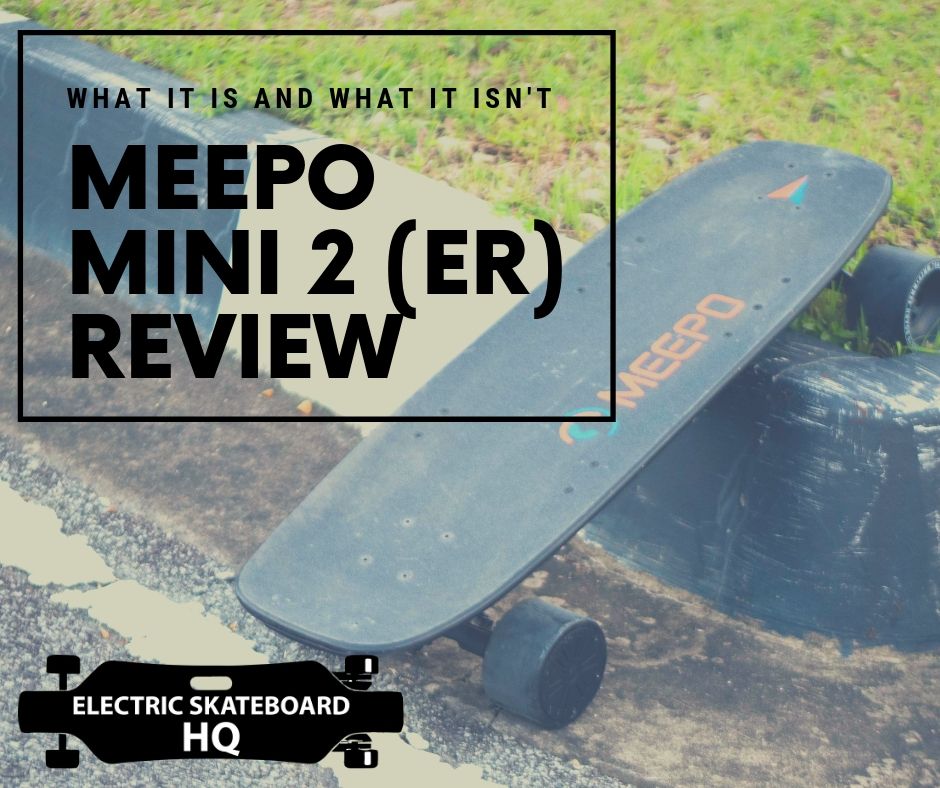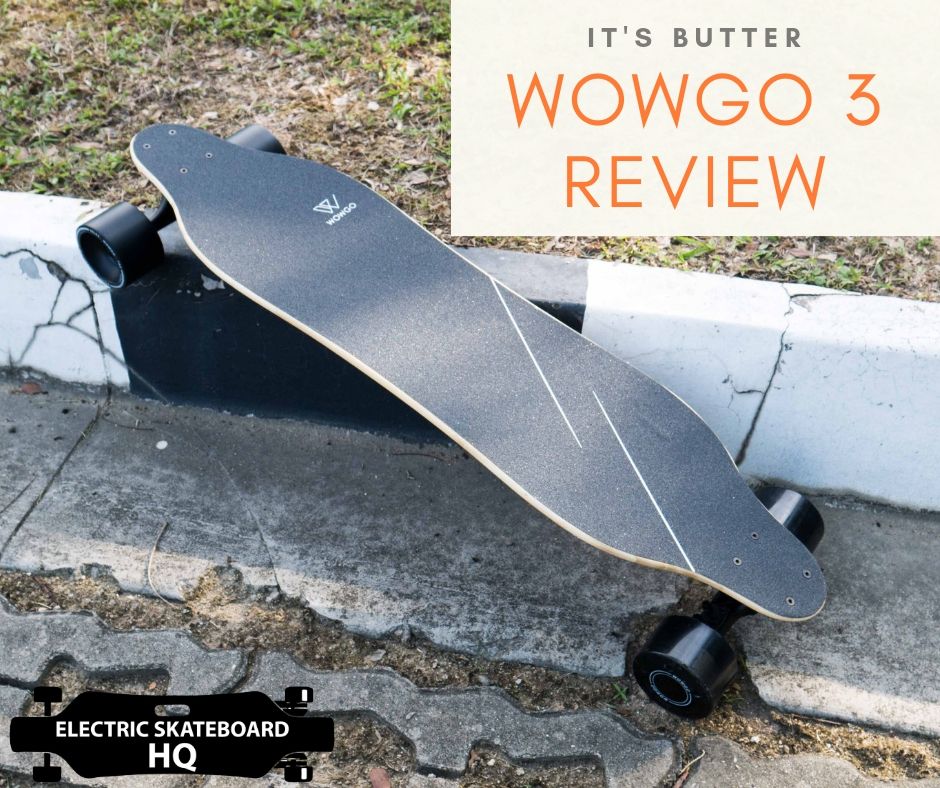Foreword and Introductions
Chargiot was not a brand under my radar when they first approached me to review this particular product – Chargiot Bomb. Apparently, they have been around for almost a year now, selling via Amazon and resellers such as www.ElectricSkateHQ.com (which has totally no connection with us, I am serious in this one.)
Initially reluctant to take on the review as I have just done one on a very similar product in Yecoo GT, Alex from Chargiot assured me that this is not a regular DIYeboard AT setup. This is something with a much more powerful battery, as well as motors which come with an App that allows tuning of the ESC. So I took the review.
After putting this big guy with flamboyant graphic design through its paces, these are my thoughts on it.
Chargiot Bomb
These are the marketed specs of the Chargiot Bomb:
- Top Speed: 30mph/ 48kmh
- Range: 15mil/ 24km
- Weight: 22lbs/ 10kg
- Charge Time: 4.5hrs
- Features: 2 x 2400W motors, regenerative braking, handles up to 30% slope, Remote with telemetry, All Terrain ability, Bluetooth speakers.
- Price: 999USD with shipping included.
Unboxing
Despite the very “in your face” design of the site and the board, the box and package come as plain as it could be. The board is well protected with foams and that’s all that matters really.
The board comes with a bash guard, a T-tool and the charger.
Riding Experience:
Acceleration and Deceleration

Chargiot Bomb uses LingYi ESC and as its typical fashion, it comes with 4 acceleration modes and 4 braking modes. Chargiot added a little bit extra by allowing further adjustment of acceleration and braking (another 4 levels of adjustment on acceleration, braking and gearing).
Straight out of the box, Chargiot had all the settings adjusted to the highest power and that translated into less than perfectly smooth acceleration and weak to suddenly strong braking.

After failing to use the application from android and ending up borrowing an iPhone to adjust the setting, I managed to find a setting that I can live with.
With the adjusted setting, both the acceleration and braking are okay. It’s not perfectly smooth but not jarring either. Average, I would say. One particular trouble that I have is the board will give a jolty start when accelerating from a stop. Chargiot Bomb couldn’t transit from a halt to moving smoothly.
Stability
That said, however, my biggest gripe on the Chargiot Bomb is not the control but the set-up of the board. Most importantly, the biggest of all deck choice. Chargiot picked a 38.5 inches(98cm) deck with Kicktail, and while having a kicktail is one of the unique features that Bomb has, having a kicktail eats into the length of the wheelbase. What’s worse, one couldn’t practically place one’s foot on top of where the truck is because the AT wheels will bite into your shoes and the functional wheelbase is even shorter. At the end of the day, I was forced to ride with a stance not wider than I can have on a shortboard, which doesn’t help with balance.
The problem is compounded with the fact that Chargiot Bomb was pretty tall. It sits on 6″ wheels on a double riser. I felt as if I was riding on heels, and I don’t have the training of what Sookie has to do so.

One way to reclaim a wider stance is to rest the backfoot on the kicktail all the time. That did allow a more stable control and as the Bomb is heavy, you won’t get unwanted wheelies happening to you. However, this patch is not ideal for me as I find that it tired out my leg a lot faster and made turning difficult. On top of that, every minor adjustment of backfoot is wheelbite by shoe waiting to happen.
To compound the problem further, the truck uses a barrel and cone set-up which are pretty soft and made it wobbly at a highish speed. There is always the option of tightening the truck but that will instead make turning difficult. I never attempted to challenge the top-speed of Bomb, 18mph(30kmh) is about the highest I dare to go.
I’ve reached out to Chargiot complaining to them about the design and they’ve informed me that it was a conscious choice to allow the board to be more compact, and for the kicktail to have an extra benefit to be easily draggable (which is totally true… the height and handle on the kicktail made dragging it around so much easier; but I shouldn’t have more fun dragging the board around than I have riding it, should I?)
I totally get what they are trying to do.. I just completely disagree with it. In my opinion, an all terrain set-up and portability should be two mutually exclusive concepts. Trying to accomplish both of these will inevitably leave you in no man’s zone, which unfortunately is where I felt the Bombs are right now.
Chargiot team told me that they are planning to offer other options of wheels kits selections (eg. MBS 100mm), which by theory would address most of the issues I have with it. This would improve the board by eliminating wheel bites by shoes and allowing a wider stance, all while still being a capable semi-AT board.
107mm Flywheel set-up

So Chargiot sent me a set of 107mm flywheels. Unfortunately, I was unable to get a perfect system set-up, as the wheel pulley that I have wasn’t playing nicely with the 107mm wheels and the rest of the motor systems. The two pulleys are not aligned properly, resulting in skip belts. (I think.)
However, I am still able to get a general ride feel on the 107mm’s and I should say, the improvement is as much as expected.
The riding height is much lower and it felt much stable, though I still limit myself below 22mph(35kmh) as it got wobbly for me beyond that.
There was no longer wheel bite by shoes, and you can use the full length of the wheelbase as a standing platform now. 107mm wheels still allow semi-AT uses. For example, it crosses sharp speed bumps without issues and is comfortable on the poorer roads.
A change of wheel doesn’t improve on the speed controls, but it did improve on every other aspect of the ride. I honestly think Chargiot should put 107mm set-up as default, instead of going for the AT version.
Manoeuvrability

I know I said the truck was loose and wobbly, but it is pretty difficulty to turn due to the heaviness of the board. Again, I think this is something that improved significantly after changing to street wheels. Kickturns on the Bomb is pretty difficult to execute due to its weight. A better skater might incorporate it into normal rides but I know I can’t.
Vibration and Terrain capability
Despite my unhappiness with how the board handles, I have to say that it fights through terrain quite well. The 6″ honeycomb wheels and double riser soaks up small vibration completely and rolls through stones, sand, sticks and whatever without any issues. 107mm flywheels are A+ in handling rough pavement too, as expected.
The Bomb would have been a very good vehicle to roll through rough trails in AT if only it allowed a wider stance (deck swap?), but semi-AT uses with 107mm is pretty fine.

Range

I get around 14miles(23km) of range on the Chargiot Bomb.
10S5P 36V, 11Ah, 396Wh Samsung battery pack give me a 14miles(23km) of range. As I couldn’t test the top speed, I didn’t notice any significant sag until the very end of it.
On 107mm flywheels, 12miles(19km) only drain the battery to 66%. Wow.
*Rider weighs around 165lbs (70kg) and was riding in a mostly flat area in a warm climate.
A closer look at the parts:
Deck

The deck is 7ply maples + 1 ply bamboo. The kicktail is not as functional for me as I thought it would, as the board is heavy and difficult to kickturn (this will change if you ever switch to 100mms). The handle cut out on the tails make the board very draggable when not riding. If there is such a prize, Chargiot bomb would win the prize for being the most draggable eskate ever.
There isn’t much concave on the deck.

Component Enclosures and ESC

The aluminum enclosure, though looks to have generic origin, has some fun spin on it. The ‘radioactive patterns’ are actually LEDs and can glow at night to help you to be seen. Inside the enclosure is also a Bluetooth speaker, which is not of the highest quality, but allows you to blast music to announce your presence.
Wheels
6″ honeycomb wheels works pretty well, almost as well as pneumatic wheels. I like them.
Trucks
Chargiot Bomb uses the generic mountainboard trucks that can be found in DIYeboard. It’s 250mm in hanger width. The stock bushing is a barrel and cone bushing which I blame for the truck unstableness. My opinion is that this set-up put the truck in a no man’s zone. Not turny enough for agility, yet not stable enough for high speed. On a 107mm, a correct tightness and bushing set would work fine, but it was never awesome.
Remote
This is the face of LingYi ESC now. It has a screen for telemetry, which shows current speed, battery and other settings.
The remote itself is pretty comfortable on hand and provides stable connection. As mentioned, there are 4 speed modes available separately for both acceleration and braking. The reverse function is available too.
Verdict
Can an all-terrain board be compact too? I don’t think so.
Chargiot Bomb in its default AT setup proves that you can’t have your cake and eat it too. The big 6″ airless honeycomb wheels are not comfortable on a kicktail deck that is limiting on the standing platform.

On a set of 107mm wheels, however, the board did achieve what the Chargiot team designed it to do.
107mm allows for semi-AT uses.
The shorter wheelbase with kicktail does allow the board to be more compact and allows the board to be dragged around like a luggage bag.
The battery and motor are big and powerful enough for torque and power.
Unfortunately, as the board felt pretty raw overall, be it in control, looks, the ride feels or even the phone app it uses, it couldn’t make it to the top of our list when it comes to boards to recommend.





























































































